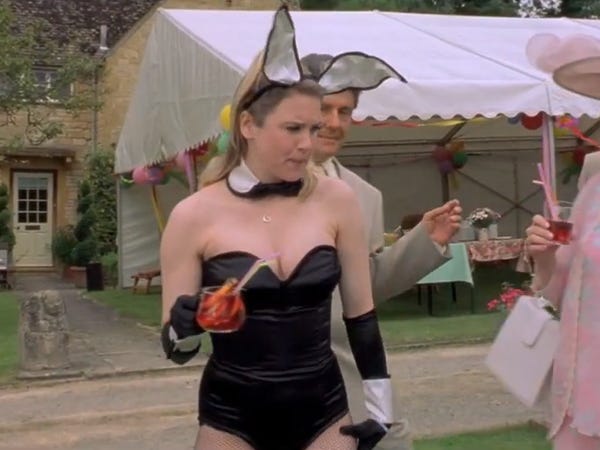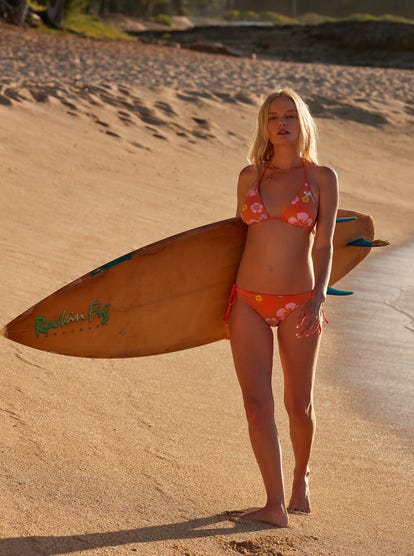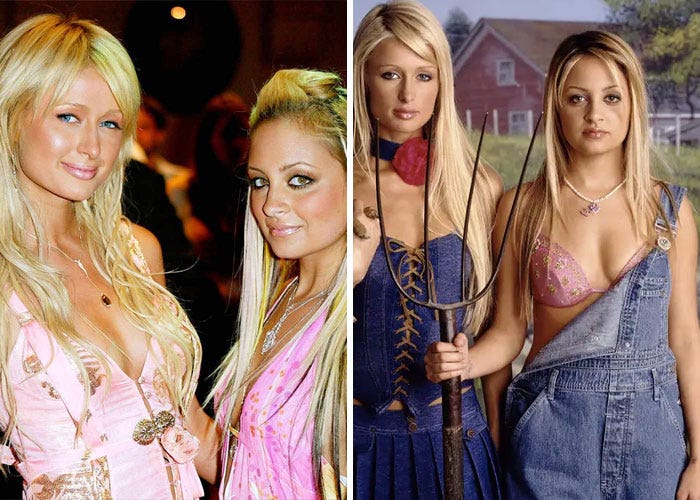Why do millennial women have such f*cked up body image?
Body positivity is a welcome social movement. Just give us a moment to catch up, says Jessica Taylor Yates
Depending which way you look at it, social platforms like Instagram are the best or worst things to happen to body image.
On the negative side, social media is literally covered with a plethora of ways to make (primarily women) feel bad about themselves – unrealistic filters, ads, edits, and surgeries masked as ‘natural’ bombarded at you 24/7. Children, teens and adults can no longer escape from the incessant marketing to be thinner, hotter, healthier, fitter, better.
On the positive, they’re spreading greater movements of the idea of beauty through body positivity movements, unfiltered trends, and inclusiveness across body shapes, sizes, genders and ethnicities.
The latter has been a welcome addition. At the age of 36, I can’t think of another time where there was so much pride and empowerment around having curves, showing off body hair, rolls, differences or cellulite, or purposely taking pictures and creating advertisements showing ‘real’ bodies. Brands not adhering to inclusive sizing and representation are criticised or considered no longer relevant, like the downfall of Victoria’s Secret or American Apparel.
And yet, for millennial women, many still strive to go on mad diets to look amazing in a wedding dress, talk negatively about putting on weight and wanting to look ‘hot’ or good for summer, feel conscious of how our arms look in photos or how our wrinkles and greys are starting to show. Not all. Many have embraced the new movement, perhaps coupled with age into not giving as much of a f*ck.
But others are still striving for the perfect filter on Instagram, scared to show anything that isn’t showcasing them in their best light. But before ridiculing or writing this off as blatant narcissism, fat-shaming or dated thinking, maybe it’s also worth investigating why millennial women have such f*cked up body image in the first place.
I’ve dug up a few moments from the news, celebrity culture and media to give an idea of what it was like to come of age in the 2000s to understand what led us here.
Toxic body image in the 2000s
1. Jessica Simpson in ‘those’ jeans
You remember the jeans.
It was 2009, and Jess was singing at some sort of Florida chilli cook-off (look, it was before she was a fashion magnate, a dollar is a dollar). But rather than articles about the performance, the varying types of chilli (not: zero is my tolerance level), all the world media could hone in on was how FAT Jessica was. Not curvy, not healthy, not hot - fat. The condemnation of her ‘fat’ body was so widespread that even then-President Obama was asked to comment. The worst part is that at the time, I will admit I thought she was fat – we all did. I recently looked at the picture again:
2. ‘Tubby’ Britney at the VMAs
It was 2007, the year of Britney’s now infamous ‘meltdown’. Of course, back then, this wasn’t a woman clearly crying out for some mental support after countless abuses by the media and allegedly her own family. Instead, she was a train wreck, nuts, whose comeback at the VMAs was overshadowed by how ‘fat’ and ‘out of shape’ she was. Here’s… ahem… ‘fat’ Britney:


The same was said about Lady Gaga at the Super Bowl in 2017, by the way. Never mind the fact that she flew down from the main stage to sing a medley of hits. Cos you know - fat.
3. Bridget Jones and girls on film
Many magazines were sold on headlines about ‘ballooning’ Renee Zellweger, the actress contracted to put on weight to play the ‘chubby’ rom-com heroine Bridget Jones. In the film and its sequel, much commentary is made around her weight, including the fact that she’s meant to be somewhat dowdy, ‘big’, and that in real life, ‘poor Renee’ had to go through so much to get Bridget Jones-style ‘fat’. Because of course, there’s nothing worse. Except… this is Bridget Jones:
4. The Roxy bikini
Anyone who was an Aussie teen girl in the 00’s will tell you that come summertime, we did not have all the options for swim wear like we have now.
These days, a group of friends will head to the beach, some in a one piece, a tankini, a crop top and shorts, a bikini, a shirt and boardies… and whatever. Who cares? But at school these options simply… did not exist. There were one piece bathers like Speedos for like, sportspeople. Or there was a stringy, halter triangle-style bikini top, and if you were more than a C-cup, you were in trouble. Being ‘hot’ meant looking like a skinny, blonde, surfy girl in one of these, and if you didn’t, well, the other option was 'thicker triangle tops (that felt awfully mumsy) and board shorts. One size did NOT fit all, so instead, you decided to make yourself fit IT.
5. Magazine headlines
While now they would never get away with it (I hope), in the 00s, there was no social media or internet the way it is now, so magazines ruled. Copies of COSMO and CLEO would be held on beaches by teenage girls eagerly reading, with headlines like ‘His secret pleasure points’, ‘Pig out alert: how to stop eating when you’re full’, ‘You CAN be sex on legs this summer!', ‘7 body battles’, ‘Cosmo’s flat tummy plan’, ‘Is stress making you fat?’, ‘Lose 5kg in just 7 days!’ (These are not made up, by the way.)
These were also flashed across an image of a celebrity that was thin and ‘hot’, like Mischa Barton, Alyssa Milano, Holly Valance, Miranda Kerr. There was no alternative. This was the bible.
6. Jess Mauboy and Paulini on Australian Idol
Never mind a gorgeous Paulini belting out Aretha Franklin, because she apparently ‘needed to shed some pounds’ to get famous, according to judges on the TV juggernaut that was Australian Idol. When you only have three or four TV stations in the country, you bet that everyone was watching and got the message.
In 2006, a then 17-year-old Jessica Mauboy walked onto the stage to belt out another banger. Instead of complementing her incredible vocals, judge Kyle Sandilands told the Indigenous teenager to ‘lose the jelly belly’, a quote that stuck with her going on to do interviews about ‘losing two dress sizes’ which is fine if that’s what she wants but also… she’s a singer so.. do we care?
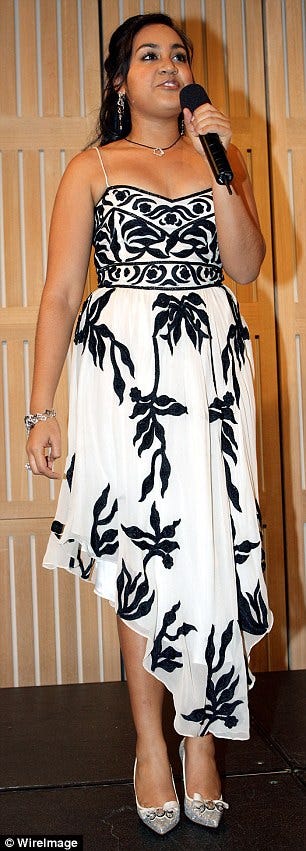
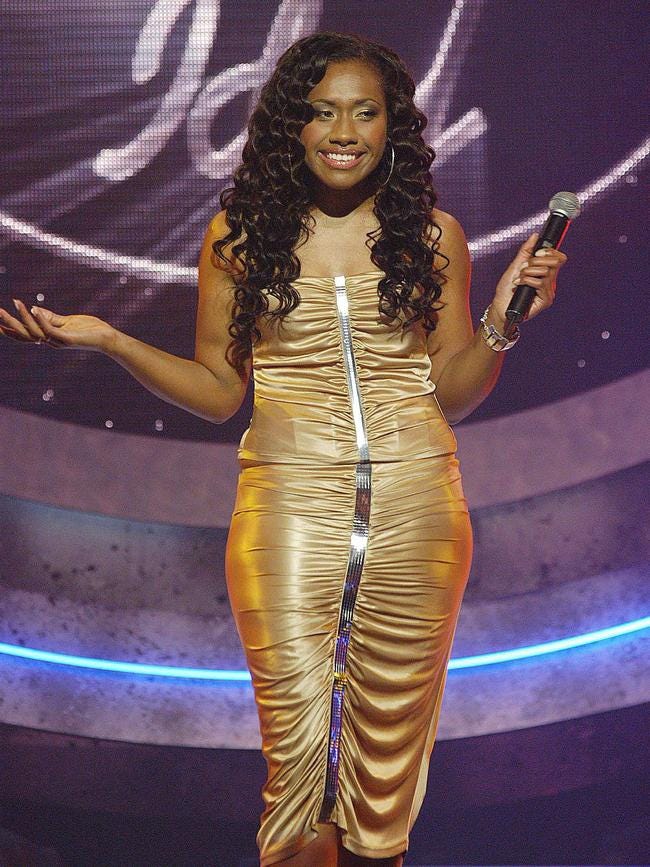
7. Perceptions of ‘hot’ and ‘beautiful’ in the media
During this era, and many before it, there really only seemed to be a single narrative of what it meant to be ‘hot', which largely aligned with being thin (and often blonde). Celebrities at the time - Paris Hilton, Nicole Ritchie, Mischa Barton, Britney Spears, Lindsay Lohan - all both projected and adhered to this aesthetic, not to do so wasn’t seen as positive, happy or beautiful – you’d lost it.
Even in fictional media, this was also pretty standard. Hot = thin, usually blonde, cheerleader. The worst thing that could happen in a teen film was being lumped with the ugly chick, and it was best to make yourself hot for a boy (see, She’s All That, Mean Girls, Clueless).
Instead, it was a culture where even being as hot as Jessica Simpson got you on the cover of The Daily Mail being fat shamed by the world, or to be judged as being ‘hot or not’. Pictures of women just living their lives made the cover of News of the World for daring to have cellulite or not having lost baby weight. Even though to some it seems insane, to not immediately be thin was, for these women and those who followed, seen as ugly and something to be ashamed of.
8. The sexualisation of underage girls
While this would now (rightly) be condemned, in the 2000s, while it wasn’t okay to, say, put a teenager on the front of Playboy, it didn’t mean you couldn’t publicly want for it, or get close.
When the Olsen twins were 17, a countdown began on male-dominated websites and magazines for when they were finally ‘legal’. When Lindsay Lohan was 16, grown men would camp out the front of her house to get photos and videos, shouting obscenities at her. Britney Spears was on the front of Rolling Stone magazine in lingerie when she was just 16.
These women were also pitted against each other on public ‘hot’ lists, which no doubt influenced the wider population. After all, if these women are hot and f*ckable at 16, 17 – why aren’t you?
9. Permitted social norms
“She’s a minga!”
“Mate that outfit, what a sl*t.”
“Fatty boomba!”
“He made out with that f*t chick, yuck!”
“No fat chicks!”
Hearing boys and men speak like this about women you knew was commonplace around most schools, and probably workplaces. Women were –and at many times, still are – constantly judged on their appearance when it came to their weight, looks, body hair, as well as their participation in sexual acts. Permitting this kind of language – from family, friends, colleagues, and even us as young women and girls – meant rather than shut it down, which is what should have happened, we were desperate not to be the ‘gross’ girl and changed ourselves to fit these standards instead.
10. Millennial fashion trends
Clothing trends at the time were also unkind to basically any woman who had gone through puberty. Like the ‘heroin chic’ era of the 90s before it, the 00s was about low waist, skinny jeans to show off a flat stomach and thinner legs, ‘cute’ and colourful bikinis and bras, with everything tight, small and straight – including hair, making those of us who did not fit into this body ideal feel unattractive for daring to have curly hair, hips or boobs.
This is what you wore to be cool, to fit in. The me now at 36 would laugh, not care and get back into my comfy trakkies to go anywhere, whatever. But at 14, 15, when you’re so desperate to fit in, your body is changing, you just want to be liked and included and don’t know yet there is a whole world out there who will love you for you, these things seem so important and all-encompassing. I wish they hadn’t. I get sad if I look at an old diary entries where I constantly chastise myself for my weight or being ‘fat’, when I was nowhere near. Or even if I had been, to not focus on it so much when you could just be out enjoying life and all it has to offer.
11. Generational body issues
Millennials are hardly the very first generation to go through body dysmorphia or get gaslit by the media. The world has been trying to tell women they’re not good enough since the dawn of time. The 1990s were all about heroin chic and eating fat free, the 80s were tight aerobics, drugs and diets, and previous generations were all about ‘keeping your figure’ to maintain a man’s interest with trends like the pineapple diet, corsets or feet binding. Subconsciously or not, our mothers were brought up with this same rhetoric, their own relationships with food, dieting, exercise and negative self-talk that majorly influencing us and continuing to down the chain.
12. No big social movement
Maybe there was. Maybe I missed it. But in the 2000s, you have to remember – communication was through a landline, mobile, or MSN messenger. This meant, most of the time, continuing to only socialise within your bubble. Your connection to the outside world was books, magazines, movies and TV. And if all of these things kept conveying the same message, well, you started to believe it.

Of course, it isn’t over. My heart breaks for the teenage girl in year 7 looking on Instagram at everyone hanging out without her, who doesn’t have ‘enough’ followers or likes so may delete her images, or try to get the ‘right’ pose and filter. The 13 year old boy going down the rabbit hole of what it means to be a ‘man’, or for those looking at completely unrealistic, doctored images pushing products for make up, clothing, hair, from people calling themselves coaches and experts. It doesn’t let up, because marketing is all about turning wants into needs, so they bank on low self esteem to sell.
I wish I had completely grown out of all of it. It would be great to switch it all off, not comply, and live a life free of it all. To be honest, if my (limited) skills weren’t dependant on the internet, I love the idea. But if we must, its important to keep opening ourselves to make sure platforms like social media at least bring us joy rather than discontentment the majority of the time.
Stop following any accounts that bring you down, and focus on those that make you feel good and inspired in a healthy and positive way.
Make time to be grateful for the positive in your life, including your body.
Take the odd picture when you look great, and remember that the you in 10 years will be looking at it and thinking you shouldn’t have been so hard on yourself.
Personally, I’m trying with all the above. I would hope to think I’m not as self-conscious or focused on many aspects of my appearance, particularly for the opposite sex, now I’m older, less self-conscious, care less what people think (or have less energy to care!) and more aware. Now, a lot of of what I cared about is laughable to me. Pasta > abs, forever.
I’m not perfect with not caring. It’s hard to switch the years of total gaslighting above completely off, more like an ongoing dim. The positive aspects of the new movements are so inspiring, and I freaking love it. I wish I had had it when I needed it more.
So to the other generations talking about ‘toxic millennials’, know we’re all trying - just give us a minute to catch up!







